

Origins and Meanings of the Eight-Point Star. Views: 73551 The shape that most clearly represents Morocco in my mind’s eye is the eight-point star.
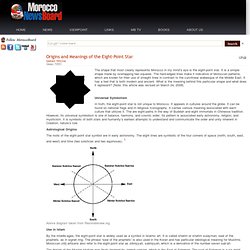
It is a simple shape made by overlapping two squares. The hard-edged lines make it indicative of Moroccan patterns, which are known for their use of straight lines in contrast to the curvilinear arabesque of the Middle East. It has a feel that is both modern and ancient. What is the meaning behind this particular shape and what does it represent?
Universal Symbolism In truth, the eight-point star is not unique to Morocco. Astrological Origins. Apple’s Tax Strategy Aims at Low-Tax States and Nations. Divine Economics. Lapidary. A rural Thai gem cutter (1988 photograph) A jewellery worker in Sri Lanka (2006 photograph) A specialized form of lapidary work is the inlaying of marble and gemstones into a marble matrix, known in English as "pietra dura" for the hardstones like onyx, jasper and carnelian that are used, but called in Florence and Naples, where the technique was developed in the 16th century, opere di commessi.

The Medici Chapel at San Lorenzo in Florence is completely veneered with inlaid hard stones. The specialty of "micromosaics", developed from the late 18th century in Naples and Rome, in which minute slivers of glass are assembled to create still life, cityscape views and the like, is sometimes covered under the umbrella term of lapidary work. In China, lapidary work specializing in jade carving has been continuous since at least the Shang dynasty. Apart from figurative carving, there are three broad categories of lapidary arts. See also[edit] References[edit] The Lapidary Arts in Islam. Islamic Gemstones and Gemology.
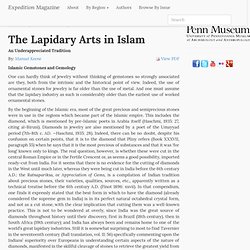
The Lapidary Arts in Islam. Islamic Art. Geometric motifs were popular with Islamic artists and designers in all parts of the world, for decorating almost every surface, whether walls or floors, pots or lamps, book covers or textiles.
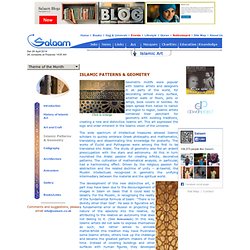
As Islam spread from nation to nation and region to region, Islamic artists combined their penchant for geometry with existing traditions, creating a new and distinctive Islamic art. Www.masonicdictionary.com. By Bro.

Joseph Fort Newton. theologyphilosophycentre.co.uk/papers/Kilby_MathematicsBeautyTheology.pdf. Neoclassical economics. Neoclassical economics dominates microeconomics, and together with Keynesian economics forms the neoclassical synthesis which dominates mainstream economics today.[2] Although neoclassical economics has gained widespread acceptance by contemporary economists, there have been many critiques of neoclassical economics, often incorporated into newer versions of neoclassical theory.
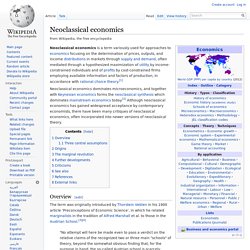
Overview[edit] The term was originally introduced by Thorstein Veblen in his 1900 article 'Preconceptions of Economic Science', in which he related marginalists in the tradition of Alfred Marshall et al. to those in the Austrian School.[3][4] "No attempt will here be made even to pass a verdict on the relative claims of the recognized two or three main "schools" of theory, beyond the somewhat obvious finding that, for the purpose in hand, the so-called Austrian school is scarcely distinguishable from the neo-classical, unless it be in the different distribution of emphasis.
Three central assumptions[edit] Philip Pilkington. Philip Pilkington: Divine Mathematics – Neoclassical Economics as Spiritual Meditation. By Philip Pilkington, a writer and journalist based in Dublin, Ireland.

You can follow him on Twitter at @pilkingtonphil The influence that mathematics has had on neoclassical economics is obviously quite profound. However, when looked at in detail it appears that a certain type of modern mathematics was in fact highly suited to the direction many in the economics profession took after the work of Leon Walras – the Frenchman who founded modern neoclassical economics – appeared on the scene. So, it should not be thought that it was simply the formal tools of mathematics that transformed neoclassical economics into the obscurantist doctrine it is today.
Instead it should be understood that its obscurantist skeleton was ready and waiting for its mathematical flesh. It has been said before – and not just by the present writer – that neoclassical economics amounts to a sort of theological system that bears no resemblance to reality for the simple reason that it does not aim at reality. The Market as God - Harvey Cox. Few years ago a friend advised me that if I wanted to know what was going on in the real world, I should read the business pages.
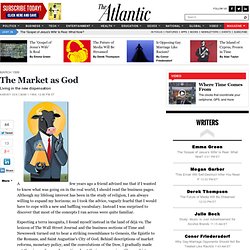
Although my lifelong interest has been in the study of religion, I am always willing to expand my horizons; so I took the advice, vaguely fearful that I would have to cope with a new and baffling vocabulary. Instead I was surprised to discover that most of the concepts I ran across were quite familiar. Expecting a terra incognita, I found myself instead in the land of déjà vu. The lexicon of The Wall Street Journal and the business sections of Time and Newsweek turned out to bear a striking resemblance to Genesis, the Epistle to the Romans, and Saint Augustine's City of God. Behind descriptions of market reforms, monetary policy, and the convolutions of the Dow, I gradually made out the pieces of a grand narrative about the inner meaning of human history, why things had gone wrong, and how to put them right.
The Market as God - Harvey Cox.